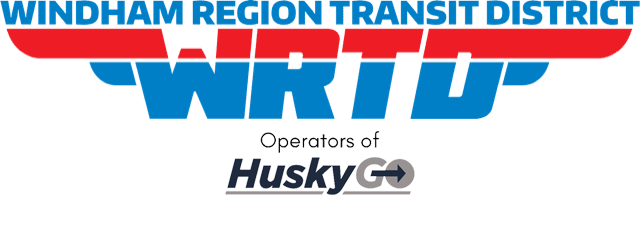What is Amortization of Premium on Bonds Payable?

Valley collected $5,000 from the bondholders on May 31 as accrued interest and is now returning it to them. Founded in 1993, The Motley Fool is a financial services company dedicated to making the world smarter, happier, and richer. The Motley Fool reaches millions of people every month through our premium investing solutions, free guidance and market analysis on Fool.com, top-rated podcasts, and non-profit The Motley Fool Foundation. When you make payments more often, it can reduce the principal owed on your loan amount faster.
What is the approximate value of your cash savings and other investments?
- The amount of the premium is recorded in a separate bond-related liability account.
- The premium arises when the bonds are issued at a price higher than their face value due to a lower market interest rate than the stated interest rate on the bond.
- Amortization is a technique of gradually reducing an account balance over time.
- In other words, if the bonds are a long-term liability, both Bonds Payable and Premium on Bonds Payable will be reported on the balance sheet as long-term liabilities.
- The table below shows how this discount is amortized using the effective interest method over the life of the bond.
- Our team of reviewers are established professionals with decades of experience in areas of personal finance and hold many advanced degrees and certifications.
To obtain this increased accuracy, however, the interest rate must be recalculated every month of the accounting period; these extra calculations are a disadvantage of the effective interest rate. If an investor uses the simpler straight-line method to calculate interest, then the amount charged off each month does not vary; it is the same amount each month. The effective interest rate calculation reflects actual interest earned or paid over a specified time frame. Amortization of premium on bonds payable is the process of gradually reducing the premium on bonds payable over the bond’s life until the bond’s carrying value equals its face value at maturity.
Definition of Amortization of Premium on Bonds Payable
If however, the market interest rate is less than 9% when the bond is issued, the corporation will receive more than the face amount of the bond. The amount received for the bond (excluding accrued interest) that is in excess of the bond’s face amount is known as the premium on bonds payable, bond premium, or premium. An amortization calculator offers a convenient way to see the effect of different loan options. This type of calculator works for any loan with fixed monthly payments and a defined end date, whether it’s a student loan, auto loan, or fixed-rate mortgage.

Journal Entry Format
The journal entries for the years 2024 through 2027 will be similar if all of the bonds remain outstanding. Double Entry Bookkeeping is here to provide you with free online information to help you learn and understand bookkeeping and introductory accounting. Chartered accountant Michael Brown is the founder and CEO of Double Entry Bookkeeping.
Amortizing Premiums and Discounts
In the context of loan repayment, amortization schedules provide clarity concerning the portion of a loan payment that consists of interest versus the portion that is principal. This can be useful for purposes such as deducting interest payments on income tax forms. It is also useful for planning to understand what a company’s future debt balance will be after a series of payments have already been made. As illustrated, the $1,007,000, 5-year, 12% bonds issued to yield 14% were sold at a price of $92,976, or at a discount of $7,024. The table below shows how this discount is amortized using the effective interest method over the life of the bond. The bonds have a term of five years, so that is the period over which ABC must amortize the premium.
- Our work has been directly cited by organizations including Entrepreneur, Business Insider, Investopedia, Forbes, CNBC, and many others.
- We always record Bond Payable at the amount we have to pay back which is the face value or principal amount of the bond.
- We may earn a commission when you click on a link or make a purchase through the links on our site.
- The effective interest method is an accounting practice used to discount a bond.
- In the same way that making loan payments more frequently can save you money on interest, paying more than the monthly minimum can also result in savings.
- The updated bond cost basis is calculated by subtracting the annual bond premium amortization from the initial cost basis.
The effective interest rate calculation is commonly used in relation to the bond market. The calculation provides the real interest rate returned in a given period, based on the actual book value of a financial instrument at the beginning of the period. If the book value of the investment declines, then the interest earned will decline as well.
Amortizing Bond Premium With the Constant Yield Method
Our goal is to deliver the most understandable and comprehensive explanations of financial topics using simple writing complemented by helpful graphics and animation videos. Our team of reviewers are established professionals with decades of experience in areas of personal finance and hold many advanced degrees and certifications. 11 Financial is a registered investment adviser located how to calculate premium amortization in Lufkin, Texas. 11 Financial may only transact business in those states in which it is registered, or qualifies for an exemption or exclusion from registration requirements. 11 Financial’s website is limited to the dissemination of general information pertaining to its advisory services, together with access to additional investment-related information, publications, and links.
Why You Can Trust Finance Strategists
In order to calculate the premium amortization, you must determine the yield to maturity (YTM) of a bond. The yield to maturity is the discount rate that equates the present value of all coupons and principal payments to be made on the bond to its initial purchase price. When a bond has an interest rate that’s higher than prevailing rates in the bond market, it will typically trade at a price higher than its face value. Such a bond is said to trade at a premium, and the tax laws allow you to amortize the bond’s premium between the time you purchase it and its maturity date in order to offset your income. Below, you’ll learn more about bond premium amortization and one method of calculating it known as the straight-line method. To calculate the amortizable bond premium using the constant yield method, multiply the bond’s adjusted cost basis by its effective interest rate and subtract the annual interest payment.

